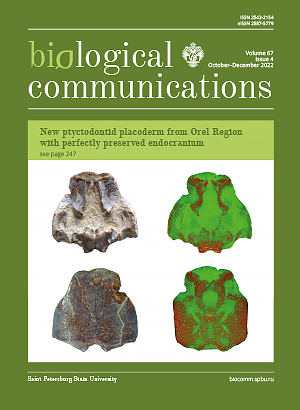Scientific collections of the Zoological Institute of the Russian Academy of Sciences, Saint Petersburg
DOI:
https://doi.org/10.21638/spbu03.2022.407Abstract
The Zoological Institute of the Russian Academy of Sciences in St Petersburg is one of the oldest biological research institutions in Russia, housing the largest zoological collections in the country, both in terms of their size (number of specimens) and global diversity. It is also one of the largest zoological depositories in the world, with over 60 million specimens in its stores. In total, the Zoological Institute holds about 260,000 animal species, about a quarter of the world’s known diversity. The type collection includes several tens of hundreds of primary types, which are very important as the essential foundation for zoological nomenclature. The digitisation of scientific collections now plays an important role in ensuring the standardised accumulation and use of various data sets, as well as quick access to stored information. The digitised scientific collections of the Zoological Institute are published online for the public access. To date they have accumulated 146,695 taxa records and over 13,000 high quality images of invertebrate and vertebrate specimens and their original data labels. The Zoological Institute is not only a depository of animal specimens important for biodiversity inventories and studies, but also a unique bank of genetic resources of extant/extinct animals which can be studied using modern genetic technologies.
Keywords:
zoological collections, biodiversity, taxonomy, digitization, genetic researches
Downloads
References
Downloads
Published
How to Cite
License
Articles of Biological Communications are open access distributed under the terms of the License Agreement with Saint Petersburg State University, which permits to the authors unrestricted distribution and self-archiving free of charge.





